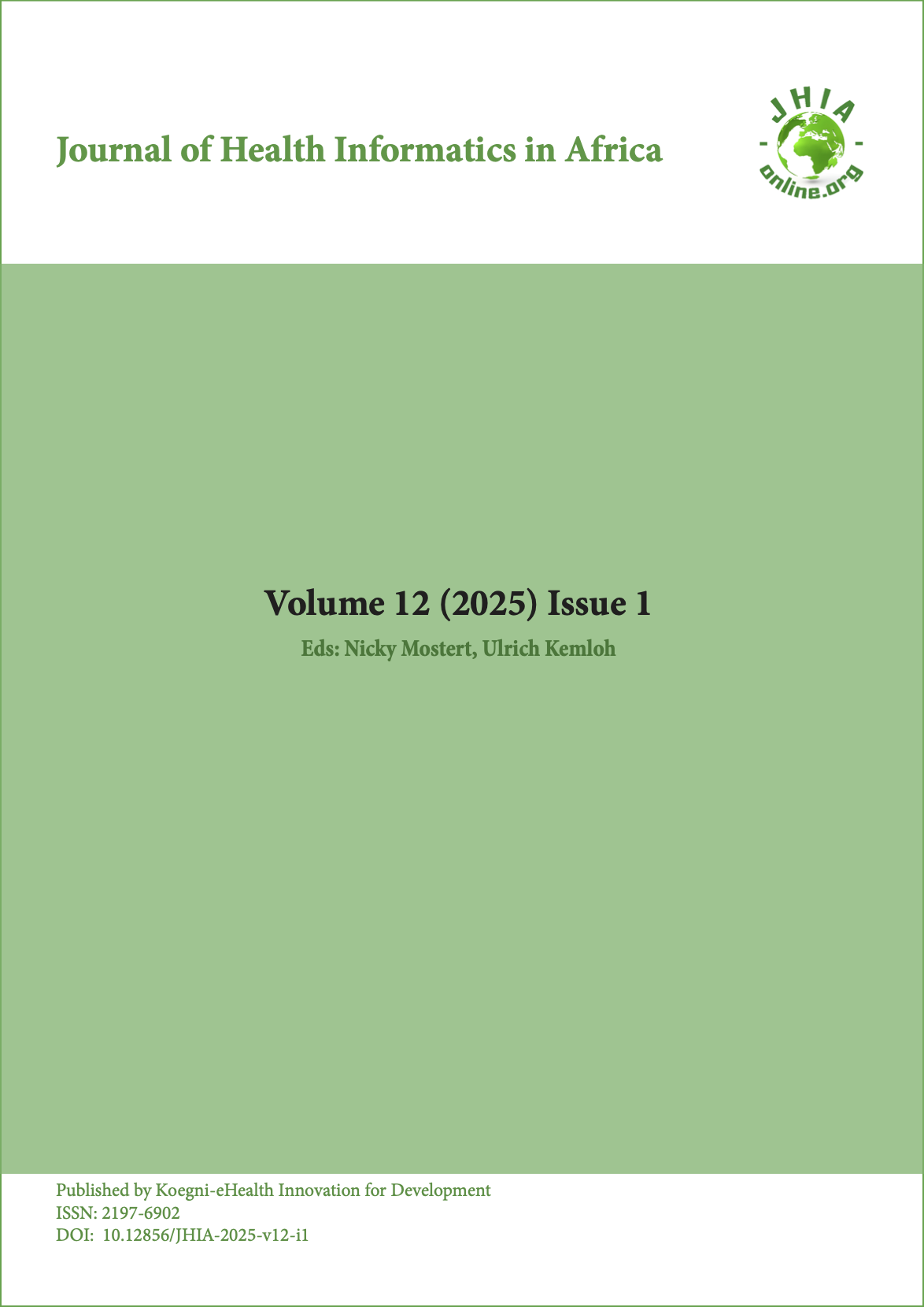Improving Cancer Data Availability Within Routine Reporting Systems in a Low-Income Setting: A Case of Mbarara Regional Referral Hospital, Uganda
DOI:
https://doi.org/10.12856/JHIA-2025-v12-i1-546Abstract
Background and purpose: Worldwide, an estimated 19.3 million new cancer cases and almost 10.0 million cancer deaths occurred in 2020. In the same year, 801,392 new cancer cases and 520,158 cancer deaths occurred in sub-Saharan Africa where cancer survival is even disproportionately lower. In Uganda, there is limited knowledge about the usability levels of national electronic reporting systems with patient-level cancer data. Such data guide operational planning, track progress and performance over time, evaluate and understand cancer risk factors, study phenomena, explore relationships, test hypotheses, or draw meaningful conclusions. This study intended to fix the knowledge gap on the usability level of a routine electronic reporting system using standard tools.
Objective: To determine the usability of the developed reporting system at a cancer unit in a low-resource setting.
Methods: This observational study used a design science approach, configuring the Maintenance application and Tracker domains in DHIS2 version 2.40.3. Retrospective records of 104 new cancer cases were purposively selected and entered into the instance. The mean usability score was determined using the system usability scale (SUS).
Results: A mean SUS score of 72.34 (SD 11.23) was obtained at a 76.19% response rate. Most respondents were male (75%) with a mean age of 30.81 (SD 7.4).
Conclusions: A web-based DHIS2 instance made cancer data available and accessible. There is a need to scale the instance to the remaining 15 regional hospitals out of 17, use prospective programmatic data in future studies, and conduct system pre-training to improve user engagement.





